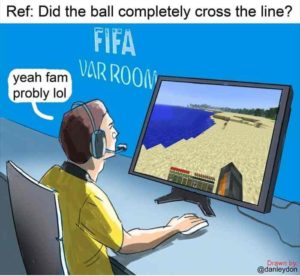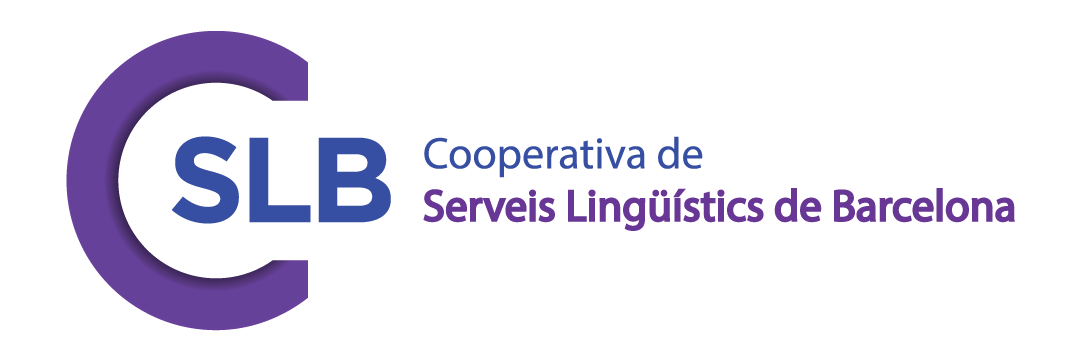Activities for Task-Based Learning – a review
[dt_sc_box type=”info-box” bgcolor=”#ededcb”]Anderson, Neil & McCutcheon, Neil (2019). Activities for Task-Based Learning: Integrating a fluency first approach into the ELT classroom. Stuttgart: DELTA publishing.[/dt_sc_box]
Before we can get into a review of Anderson & McCutcheon’s Activities for Task-Based Learning (2019), I want to deal with a broader question which might help us place their book in the scheme of things. The question is something like …
How can we describe and categorise the various approaches to teaching languages?
Mike Long offers a view based on the division between analytic approaches (where learners use the language to do things, and work out the mechanics of the language from the input), and synthetic ones (where the language is taught in bits, and the job of the learner is to accumulate and synthesise them into successful language use). He describes three major options:
[table id=11 /]
(Long 2015: p. 28)

Here, Long seems to place his version of Task-Based Language Teaching (TBLT) in a centrist position between what he describes as ‘two fundamentally different and mutually exclusive positions’ (p. 29). However, we should beware. Long’s TBLT is still primarily analytic, although it recognises the deficiencies of purely analytic approaches. The compromise it suggests is on how to treat explicit language teaching within the framework: not via focus on formS, where the (grammatical, functional, and/or lexical) forms themselves are the units from which the syllabus is built; but by focus on form: largely reactive and unobtrusive teaching deployed while learners are engaged in doing tasks.
In that sense, Long’s TBLT doesn’t really occupy the middle ground in a continuum of options. Rather, it takes a position left (i.e. on the analytic side) of a fundamental rupture or dividing point. On either side of this point, in Long’s view, teaching and learning—as well as testing and evaluation—are done in different and incompatible ways.
Is this too extreme a view? Is there indeed a more properly middle ground, where learners both do things with the language communicatively, and learn explicitly about the language? The political analogy might hold; we’re talking about something equivalent to a Blairite Third Way, where social policies are applied to balance out the iniquitous effects of the free market. As with language teaching approaches, there will be those who see this as a flawed model where the inequities will always return (due to the market remaining in the driving seat), and others who view it as the best of both worlds, or at least as superior to either extreme (a completely managed economy or unfettered market liberalism).
The pedagogical Third Way certainly appears to be the reality of many classrooms where teachers are essentially following a synthetic syllabus (very often derived from a coursebook), but give their learners room to use the language beyond the simple practice of discrete items. And ‘most modern coursebooks’, according to one recent defence, ‘have both synthetic and analytic characteristics’ (Hughes 2019: p. 1). While usually organised around the presentation of a predictable sequence of grammar points, these CBs also include ‘activity types which encourage discussion, guided discovery, personalization, critical thinking, communication (written and spoken), pragmatic competence building, emphasis on building the four skills, use of project work, etc.’ (p. 8); in short (and here we need to gloss over the reference to skill-building), elements that ‘encourage communication and support interlanguage development’ (p. 3).
However, is this Third Way—if we accept the superiority of analytic approaches for developing interlanguage—not counterproductive, or at least, likely to be only partially effective? Much may depend on the amount of freedom teachers are given to prioritise the communicative elements of the course, and whether or not the development of communicative competence, rather than the accumulation of explicit knowledge of linguistic forms, is the measure of student progress. And much might also depend on your view of the role of that explicit knowledge in acquisition. Supporters of Long’s position argue that it cannot become implicit or procedural (i.e. part of a learner’s spontaneous repertoire) by dint of repeated practice, and certainly not before a learner is developmentally ready; as Nick Ellis puts it, ‘explicit and implicit knowledge are distinct and dissociated; they involve different types of representation and are substantiated in separate parts of the brain’ (2005: p. 307). The argument that Long and Ellis make is that explicit, attentional learning works to improve implicit processing, which accounts for ‘the bulk of language acquisition’ (ibid: p. 306). So the key objections to this ‘best of both worlds’ approach which Hughes claims for CBs may be that 1) it all depends on what Ts prioritise, perhaps determined by how learners are assessed; and 2) time given over to the explicit teaching and practice of discrete items (whether ‘discovered’ inductively or not) should be judiciously minimal, secondary and reactive to communicative work.
Needs or interests?

There’s another variable that one might use to categorise or divide language teaching approaches: how far they take into account learners’ specific communicative needs and use these as the basis for a language course, both in terms of content and assessment. Surely part of the reason for the dominance of synthetic approaches is the ubiquity of the ‘general English’ (GE) classroom, where we do TENOR (Teaching English for No Obvious Reason) or ENP (English for Nebulous Purposes), and where students are grouped according to tests which purport to measure proficiency rather than need. No matter what you need to do with the language in real life, the argument might go, you need to know how to construct a second conditional. And this also leads to materials for general English classrooms basing themselves on topics of the most general (and market-friendly) interests, rather than on specific needs learners might have.
In this sense, the criteria by which teachers select and reject topics and activities for the classroom (assuming they are even in a position to do so), may more often be based on a survey of learners’ interests than on their actual present or future needs. In this kind of context, can or should a task-based approach be deployed? Mike Long argues that it shouldn’t, and places the needs analysis (of a most thorough kind) at the heart of his TBLT:
A course that bypasses needs analysis and simply teaches ‘English’, ‘Spanish’, ‘Chinese’, or ‘Arabic’ risks wasting everybody’s time by covering varieties of the target language, skills, genres, registers, discourse types, and vocabulary that students do not need, at least not immediately, and by not covering the often specialised target tasks … that they do need. In attempting to cater to the majority, the course will often be slow-paced and over-inclusive in both the skills and the linguistic domains treated, covering linguistic features ‘because they are there’, as an end in themselves rather than as a communicative tool.
(Long 2015: p. 11)
On the other hand, Rod Ellis (not to be confused with Nick Ellis referenced above) questions whether language proficiency is best conceptualised as domain- or task-specific, or if it should rather be related to ‘a set of general abilities applicable across task types and situations’. He goes on:
The alternative is to select tasks that have interactional authenticity without undue concern for their situational authenticity … There is, however, still the important question of what topics the tasks should address. Ideally these should motivate learners’ engagement with the tasks … [T]here are dangers in syllabus designers basing the choice of topics on their own judgment; ideally students should be consulted about what topics interest them.
(Ellis, R. 2018: p. 13)
Furthermore, Rod Ellis advocates a ‘modular syllabus’ combining synthetic and analytic approaches, and conducts research into Task-Supported Language Teaching (TSLT)—where tasks support the teaching of specific language points, rather than being ends in themselves. Alongside Jane Willis, then, he is the proponent of TBLT who most easily falls in with the Third Way outlined above, and whose proposals fit best with the ethos of the GE classroom. It is therefore no surprise that Neil Anderson and Neil McCutcheon’s Activities for Task-Based Learning—‘primarily intended for the general English adult and teenage classroom’, according to the blurb—appears to be inspired more by Rod Ellis and Jane Willis than by Mike Long.
And so, to the review!

In this GE context, there is no doubt that Activities for Task-Based Learning is a much-needed addition to the meagre resources currently available to teachers interested in delivering an essentially ‘fluency-first’ approach in their classes. Its 36 activities, complete with photocopiable materials and additional digital resources, are neatly laid out and clearly explained, with plenty of wiggle-room left for teachers for learner-centred adaptation. It is also perhaps the only ELT resource book I have ever seen which draws on Second Language Acquisition (SLA) research to justify its approach, for which—despite my reservations—its authors must be commended.
As such, Activities for Task-Based Learning will become part of the reading on our TBLT online teacher-training course, particularly in the session ‘Which TBLT?’, which outlines different definitions of ‘task’ and versions of TBLT. On our course, we favour Mike Long’s version, while acknowledging the difficulty of implementing it without broad institutional support, and the need in some contexts of applying a ‘lighter’ version that respects Long’s methodological principles.
Does this book represent that lighter kind of TBLT, or is it more in line with the Third Way? As I’ve said, it is fairly clear that the Anderson and McCutcheon prefer an approach based on the Jane Willis framework, which they reproduce in their introduction. They also incorporate Rod Ellis’s idea of focused tasks – tasks which focus students on using particular forms, either via task design or teacher feedback. In this sense, the book may best be described as promoting a kind of TSLT—although its authors favour, with Willis, a post- rather than pre-task explicit language focus.
It is for this reason that Activities for Task-Based Learning will certainly appeal to teachers accustomed to using a coursebook and following a synthetic (probably grammar-based) syllabus, but who want to make their lessons more focused on meaning and fluency development. TBLT (Long’s version) is, in my view, more radical and ultimately superior to the TSLT approach adopted by Willis, but will usually require implementation at an institutional level or beyond. It is therefore appropriate that a book aimed at teachers alone will err on the side of caution, and it is at this level that Activities for Task-Based Learning should be most effective. And as Long himself acknowledges (Long 2015: p. 7), TSLT could serve as a bridge between traditional approaches and his TBLT.
However, we need to be clear about what kind of benefits and drawbacks such an approach might bring.
For example, Jason Anderson’s preface to Activities for Task-Based Learning claims that Rod Ellis’s focused tasks ‘have been shown to lead to significant learning when used within a “task-supported” approach to language teaching (Li, Ellis & Zhu, 2016), comparing favourably even to unfocused tasks of the kind that Long (2015) argues for’ (p. 3). The full reference is not given, but I assume Anderson is referring to this study comparing the acquisition of the past passive form under various TSLT and TBLT conditions. Li, Ellis & Zhu tentatively conclude that ‘TSLT rather than “pure” TBLT holds more promise for teaching grammatical structures that are new’ (Li, Elliz & Zhu, 2016: p. 225).
But as the study’s authors acknowledge, TBLT is not intended or designed for the teaching of discrete grammatical items; the ‘significant learning’ that Anderson refers to is not related to effective task performance or task completion, but to the acquisition of a pre-selected form. Secondly, the activity used by Li, Ellis & Zhu is a dictogloss—which, as I’ll argue below, is not really a ‘task’ at all. And this brings us back to the consideration (or not) of students’ real-life communicative needs.
Tasks or communicative activities?
Let’s take a look at the definition of ‘task’ that Anderson and McCutcheon employ and embody in their activities. Initially echoing Long’s simple definition of a task as something ‘that students do as part of their everyday lives’ (p. 7; see Long 2015: p. 108), Anderson and McCutcheon then claim to be taking a ‘wider’ view of tasks, by which I think they mean more inclusive of what we might call communicative activities. The ‘narrow’ conception, in their view, is Long’s insistence on deriving tasks from a thorough needs analysis conducted with students and domain experts. Echoing Rod Ellis’s aforementioned concern with ‘interactional’ rather than ‘situational’ authenticity, Anderson and McCutcheon’s ‘wider conception’
includes […] various classroom activities (games, role-plays, interviews, “speed-dating” etc.) which, despite not being drawn directly from real-world contexts such as business and academic life, nonetheless resemble real-life situations and allow the students to flex their communicative muscles.
(p. 9)
In my view, there is nothing much wider than everyday life and what people need to do in it. What happens in Long’s TBLT is that narrowing occurs as students’ immediate or probable future needs are identified and a list of target tasks is drawn up. Eschewing this step divorces task design from students’ practical needs, so that when Anderson and McCutcheon ask the question, ‘How do I choose tasks for my learning context?’ (pp. 9-10), they don’t really offer a clear answer. While insisting that their tasks ‘remain emphatically student-centred in that they are fun, communicative, and relevant to students’ needs’ (p. 9), those possible needs are nowhere really mentioned, except in terms of the ‘interests and language needs of your particular students’ (ibid; emphasis mine). In this way, the authors, just as coursebook publishers do, seem to have chosen topics of the most general interest—e.g. technology, neighbourhoods and neighbours, music, art and health—with guidance on adapting these to particular student interests. And each one comes with a list of language feedback options which generally correspond to functional and grammatical points found in coursebooks.

Where the tasks could be related to particular vocational needs, such as in task 3c ‘Counsellors/Dilemmas’, what happens is that there is a loss of any specificity that could make the task useful to someone who actually needed to perform counselling duties in English as an L2. Anderson and McCutcheon suggest that this role-play task could be adapted to the following situations:
- Landlords looking for tenants.
- Travellers looking for holiday destinations, and holiday company representatives.
- Careers guidance interviews, or job fairs, in which prospective employers sell their skills to employers
(p. 57)
It seems to me that the task is so adaptable mainly because it is not based on any real-life target task which has, according to Long’s approach, been analysed for discourse. That’s to say, the actual language used in counseling exchanges has not been investigated, and students are not presented with any model which might provide input on the most representative language and discursive moves (turn-taking conventions, for example). The task is therefore more like a communicative routine based on the most generalised advice-giving situations, and we are prompted to provide language feedback to students selected from familiar language points from coursebook units and communicative resource book activities on similar topics, i.e. functional phrases for advising and suggesting, describing problems, using type 1 and 2 conditionals, and so on. As Long points out, this kind of generic input is not ‘rich’:
If [learners] are to be prepared to achieve their context-, domain-, and task-specific communicative needs beyond the classroom, they require materials that expose them to samples of the L2 that are context-, domain-, and task-specific […] As shown by studies that have compared genuine examples of target discourse with what is found in traditional pedagogic materials, the language this entails is often of a kind rarely encountered in commercial textbooks[.]
2015: p. 307
So the conception of task in Activities for Task-Based Learning is ‘wider’ than Long’s precisely in its lack of specificity. What it loses in the process is relevance to particular student needs. And ironically, this means that the tasks themselves become open to a kind of narrowing in which they are offered up for selection based not so much on their communicative relevance, but on their usefulness as vehicles to deliver practice of particular language points.
Anderson and McCutcheon will probably object that they are emphasising fluency first and are not dictating which language points should be dealt with, if at all. Yet their introduction also stresses, with reference to the famous Norris and Ortega (2000) meta-analysis, the value of explicit teaching, and even goes as far as mentioning 25% (from Nation 2013) as a ‘well-known estimate for how much of a language course should be dedicated to explicit instruction’ (p. 13).
Not only has the Norris and Ortega study been increasingly called into question, and even contradicted by more recent meta-analyses (see Geoff Jordan’s summary here), but the figure of 25% is urgently in need of contextualisation. What Nation actually says is that ‘explicit attention to form and system should never occupy more than 25% of class time, but it should not be absent’ (2013, p. 85). With this in mind, Anderson and McCutcheon’s strong encouragement to teachers ‘to provide more deliberate, focused feedback on student language in the latter phases of the [Willis] cycle’ (p. 13) needs to be treated with caution. In fact, I believe their reliance on the Willis model, with its post-task language focus, as well as their inclusion of focused tasks, leaves some of their activities too open to treatment as vehicles for delivering a structural syllabus by stealth.
Is a ‘dictogloss’ a task?
For example, Anderson and McCutcheon’s activity 7a is a dictogloss on a text called ‘The angry golfer’ (pp. 126-8). It follows a fairly well-known procedure: after a pre-task phase where some golf-related vocab might be pre-taught, students hear the text dictated twice at normal speed; following the second dictation, they note down key words and phrases from memory; they then collaborate to reconstruct the text; and finally, they compare their text to the original.
If this is a task, then following Rod Ellis’s widely-adopted definition (2003) of a task, it should include a primary focus on (pragmatic) meaning; involve some kind of gap; have learners use their own resources to complete it; and have a clearly defined, non-linguistic outcome. It is at this last hurdle that the dictogloss falls, because the comparison of reconstructed and original text, while checking consonance of meaning, inevitably looks at gaps in form. It is for this reason that dictoglosses, in my experience, are widely used to focus attention on specific forms, for example (as here) the use of the narrative tenses. This is probably why Li, Ellis and Zhu chose a dictogloss to study the acquisition of the past passive. And here, despite the authors’ insistence that ‘the process of creating a cohesive text is a task – use of specific linguistic forms is not key’ (p. 126), they offer a sample template which directs students to underline verb forms in the texts (the original is seeded with past simple and past perfect) and discuss any differences.
I don’t challenge the assertion that the dictogloss, along with other text reconstruction activities described by the book, are far more dynamic and communicative ways to look at grammatical form than the traditional PPP model. But that does not make them tasks, even by Rod Ellis’s definition. By Anderson and McCutcheon’s definition, where activities should ‘resemble real-life situations’, and by Long’s definition, where tasks are precisely real-life activities, they also seem to fall short. One can readily imagine situations (in a university lecture) or work activities (secretarial or journalistic) where individuals need to reconstruct what someone has said from notes or shorthand they have taken. But as before with the counseling task, the activity here has no such specificity and would be of limited value in training someone in this skill.
A return to CLT?
The two main objections to Activities for Task-Based Learning that I have raised—that its tasks purporting to resemble real-life activities are of limited real-life value, and that its focused tasks tend to reduce communication to a vehicle for explicit language focus—do not wholly undermine its utility. In fact, we might do well to ignore its association with TBLT and place it in a broader framework more in keeping with Communicative Language Teaching (CLT), which is where the ‘fluency first’ mantra originates from. CLT may still be based on a synthetic syllabus, but more of a notional-functional one than a purely grammatical one. This ties any explicit language focus more to meaning-making than formal gymnastics, and requires, as Scott Thornbury (2015) puts it, ’emphasis on language’s social function, including attention to appropriacy and register’ (2015).
 In fact, the main value of Activities for Task-Based Learning for me lies in its recycling of classic CLT activities, such as pyramid discussions (2b ‘Domestic robot’), ranking tasks (2c ‘Dangerous animals’), jigsaw listenings (4a ‘Bad neighbours’) and opinion and text galleries (3b ‘Polarities + Opinion Gallery’ and 5h ‘Cook off!’). These promote a kind of learning-by-doing which offers far more opportunity for communication and collaboration than is commonly found in the GE classroom, where too often such activities are squeezed in at the end following lengthy language presentation sequences. Anderson and McCutcheon do well to emphasise the need to let the activity itself dominate the lesson, and I can only hope that teachers will find the post-task language focus being cut short by time instead – thereby prompting more in-task focus on form. In fact, the lists of options for language focus for some tasks (e.g. 3b ‘Polarities + Opinion Gallery’) are very long. These less focused tasks will perhaps lead teachers to abandon the Third Way and take a more reactive approach to feedback within a more analytic framework.
In fact, the main value of Activities for Task-Based Learning for me lies in its recycling of classic CLT activities, such as pyramid discussions (2b ‘Domestic robot’), ranking tasks (2c ‘Dangerous animals’), jigsaw listenings (4a ‘Bad neighbours’) and opinion and text galleries (3b ‘Polarities + Opinion Gallery’ and 5h ‘Cook off!’). These promote a kind of learning-by-doing which offers far more opportunity for communication and collaboration than is commonly found in the GE classroom, where too often such activities are squeezed in at the end following lengthy language presentation sequences. Anderson and McCutcheon do well to emphasise the need to let the activity itself dominate the lesson, and I can only hope that teachers will find the post-task language focus being cut short by time instead – thereby prompting more in-task focus on form. In fact, the lists of options for language focus for some tasks (e.g. 3b ‘Polarities + Opinion Gallery’) are very long. These less focused tasks will perhaps lead teachers to abandon the Third Way and take a more reactive approach to feedback within a more analytic framework.
Aside from that, a number of procedural tasks (corresponding to Prabhu’s categories of information-, opinion- and reasoning-gap activities) are included, with a whole section dedicated to problem-solving tasks. In my experience, this latter category, when set up correctly and students are sufficiently engaged, can push student output as well as supply ample opportunities for student-student focus on form. According to Long’s review of research, those tasks which are closed, in that they have a correct solution (e.g. 4b ‘Fake News!’), may lead to ‘more feedback, more uptake, and greater fluency than open tasks’ (Long 2015: p. 242). Meanwhile, those which are convergent, i.e. require students to come to agreement (e.g. 2a ‘Crime and punishment’), may ‘produce more interactional modifications and negotiation for meaning than divergent tasks’ (ibid.). However, I should add that more research needs to be done on how task types may or may not affect student output, and that the effects of task complexity on production are still not clearly understood.
What Activities for Task-Based Learning offers the GE teacher, then, are templates for a range of activity types which will hopefully inspire greater amounts of class time being spent on communication, and with it, implicit learning and practice. Where teachers do not find topics of interest to their students, they can take the templates and adapt them, with Anderson and McCutcheon helpfully supplying ‘Micro-strategies and tools’ (pp. 18-29) for that very purpose.
I would only ask teachers to treat critically the assertion that ‘most of the work done on language [should] occur after the main task phase’ (p. 21); I recommend, with Long, in-task focus on form wherever possible. We could also consider task repetition, which Anderson and McCutcheon also highlight, as a better use of class time than a post-task language focus. And, of course, I’d ask that we don’t leave students’ real communicative needs completely by the wayside. GE classes may by too diverse for applying Long’s TBLT successfully. But sometimes they are not, and it does not take a hugely radical shift in thinking to set up groups by consonant needs rather than (often spurious) indications of level. In these cases, given institutional support, we could serve students much better by basing our tasks on more context-, domain- and task-specific discourse.
References
Anderson, N. & McCutcheon, N. (2019). Activities for Task-Based Learning: Integrating a fluency first approach into the ELT classroom. Stuttgart: DELTA publishing
Ellis, N. (2005). At the interface: Dynamic interactions of explicit and implicit language knowledge. Studies in Second Language Acquisition 27, pp. 305–352.
Ellis, R. (2003). Task-Based Learning and Teaching. Oxford: Oxford University Press.
——— (2018). Towards a modular language curriculum for using tasks. Language Teaching Research, https://doi.org/10.1177/1362168818765315
Hughes, S. (2019). Coursebooks: Is there more than meets the eye? ELT Journal, ccz040, https://doi.org/10.1093/elt/ccz040
Jordan, G. The value of form-focused instruction. https://applingtesol.wordpress.com/2019/10/19/the-value-of-form-focused-instruction/
Li, S., Ellis, R. & Zhu, Y. (2016). Task-Based Versus Task-Supported Language Instruction: An Experimental Study. Annual Review of Applied Linguistics, 36, pp. 205–229.
Long, M. (2015). Second language acquisition and task-based language teaching. Chichester: John Wiley.
Thornbury, S. (2015). C is for CLT. https://scottthornbury.wordpress.com/2015/03/08/c-is-for-clt/
Willis, J. (1996). A Framework for Task-Based Learning. Harlow: Longman.
